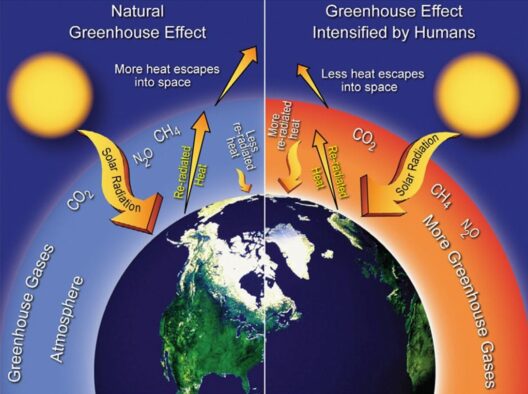Energy conservation and energy efficiency are often interwoven concepts that play pivotal roles in the quest for sustainable energy practices. Understanding the nuances between these terms is essential for individuals, businesses, and governments aiming to optimize energy consumption while minimizing environmental harm.
Defining Energy Conservation
Energy conservation refers to the deliberate actions taken to reduce energy consumption. It encompasses behavioral changes, such as turning off lights when leaving a room or utilizing public transportation instead of private vehicles. Conservation also involves making informed choices about appliances and systems, cementing a culture of prudence in energy use. Essentially, it is about doing more with less—embarking on a mindset shift that prioritizes efficient habits and resource stewardship.
Introducing Energy Efficiency
Energy efficiency, on the other hand, relates to the technology and design aspects that allow work to be accomplished with less energy input. In a strictly technological sense, it means utilizing devices and systems that perform the same task while consuming less energy. For instance, LED lights are significantly more efficient than traditional incandescent bulbs; they provide the same amount of illumination while using a fraction of the energy. Both concepts aim at a common goal: to diminish overall energy consumption, yet their methodologies differ markedly.
The Interplay Between Conservation and Efficiency
While distinguishable, energy conservation and energy efficiency are synergistic. Implementing energy-efficient technologies can lead to lower demand for energy, making conservation initiatives more feasible. For example, if society widely adopted energy-efficient appliances, the total energy demand would decrease. This reduction allows conservation efforts to have a more considerable impact as the overall strain on natural resources diminishes.
Significance of Energy Conservation and Efficiency
The consequences of energy conservation and efficiency reach far beyond mere economic savings. Reduced energy consumption translates into lower greenhouse gas emissions, contributing to a more sustainable and healthier planet. This aspect is increasingly crucial in combating climate change and preserving biodiversity. Moreover, these practices are fundamental to energy security, reducing dependency on imported fossil fuels and mitigating the risk of energy shortages.
Behavioral Changes and Their Impact
Adopting conservation habits requires a paradigm shift in individual behavior and community culture. Simple measures, such as setting thermostats more judiciously, using energy-efficient light bulbs, and practicing mindful consumption can collectively yield significant savings. Educational initiatives and public awareness campaigns often serve as catalysts for change, demonstrating that small actions can culminate in considerable environmental benefits.
Technological Innovations Enhancing Energy Efficiency
The technological landscape has seen a plethora of innovations designed to enhance energy efficiency across various sectors. Smart technologies, such as smart thermostats and energy management systems, enable users to optimize their energy use dynamically. Building automation systems that adjust lighting, heating, and cooling based on occupancy can lead to remarkable reductions in energy consumption. Industry-specific innovations, like cogeneration systems in manufacturing, harness waste heat and utilize it productively, thus epitomizing energy efficiency.
Challenges in Implementation
Government Policies and Incentives
Governments play an instrumental role in fostering energy conservation and efficiency through legislation, regulations, and incentives. Policies that promote renewable energy, provide tax breaks for energy-efficient building retrofits, and create energy conservation standards for appliances enhance public and private commitment to these initiatives. Furthermore, governments can fund research and development efforts to spur innovation in energy-efficient technologies, ensuring a future where energy consumption aligns harmoniously with ecological sustainability.
Building Energy Management Systems
In commercial settings, energy management systems are invaluable tools for enhancing efficiency. These systems analyze energy consumption patterns and identify opportunities for improvement. By utilizing data analytics, organizations can create targeted strategies that not only reduce energy consumption but also optimize operational costs. Integrative approaches to facility management bolster the efficacy of energy-efficient practices and facilitate a robust response to energy conservation efforts.
Consumer Responsibility and Engagement
Active consumer participation is vital in the collective effort to engage in energy conservation. Consumers need to take ownership of their energy usage habits, making informed choices and advocating for policies that support sustainable energy practices. Engaging users through gamification—offering rewards for energy-saving actions—can motivate individuals to make lasting behavior changes. This engagement ultimately cultivates a culture of environmental responsibility and energizes broader movements towards a sustainable future.
Conclusion: The Path to Sustainable Energy
Energy conservation and efficiency are not just parallel concepts but rather intertwined initiatives that represent the path forward in addressing the pressing energy and environmental challenges of our time. By maximizing available technologies and promoting responsible behavior, society can significantly reduce energy consumption and its attendant impacts. As individuals, businesses, and policymakers rally together, they can usher in an era of energy prudence—a dynamic harmony that facilitates a sustainable future where energy security and environmental preservation coexist. Ultimately, this dual approach creates a resilient framework for managing our most precious resources, ensuring a viable planet for generations to come.







